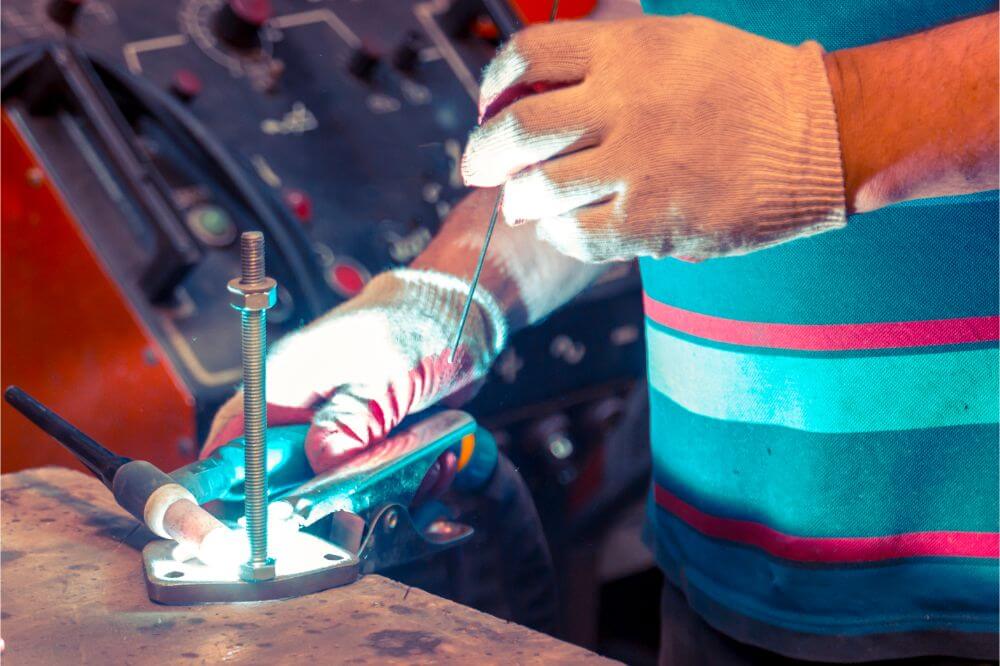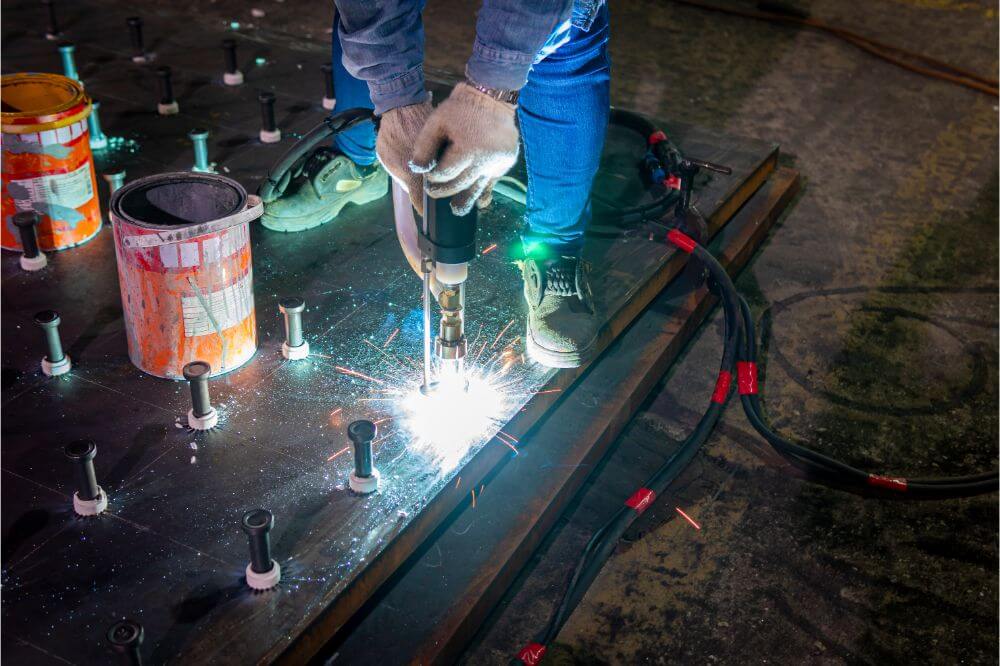What is stud welding, you may be wondering. Stud welding is a process that uses a rapidly heated stud to join two pieces of metal together. It is a quick, efficient welding method often used in construction and manufacturing.
Stud welding does not require a traditional welding torch, and the welded joint is often stronger and more reliable than a traditional weld. It also gives the welded pieces a neater, more aesthetically pleasing look.
History of Stud Welding
Stud welding has been around since the 1940s. It was developed in Germany during World War II to attach components to armor plating quickly. After the war, stud welding technology was developed and improved in countries worldwide.
In the United States, the first stud welding machines were developed in the 1950s. Since then, the technology has been refined and adapted for various applications.
It is now used in diverse industries, from automotive to aerospace. Stud welding is a reliable, cost-effective way to join materials.
Advantages of Stud Welding
Stud welding offers several advantages over other welding techniques. The weld is fast and efficient, with no need to pre-tap holes or use clamps, which can reduce production time and cost.
It also produces a strong, reliable weld free of spatter and other contaminants, saving time spent cleaning components after welding. The strength of a stud weld is typically greater than that of a spot weld, making it an ideal choice for many industrial applications.
It is also one of the most versatile welding techniques, as it can join various materials, including steel, stainless steel, aluminum, and titanium.
Additionally, stud welding can be used in a variety of positions and in tight spaces, which can be beneficial for many projects.
Process of Stud Welding
Stud welding is a relatively simple process that is often automated. The first step is to place the fastener, or stud, onto the base material. This is done by hand or with a feeder system.
Then the weld gun is placed over the stud, and the power source is activated. The force of the electrical current creates a strong bond between the stud and the base material.
The welding time is relatively short, usually no more than a few seconds. The weld gun is removed, and the stud is welded.
The welded stud is then allowed to cool before the finished product is ready to be used.

Types of Stud Welding
There are two main types of stud welding: drawn arc and capacitor discharge. Drawn arc stud welding is the most common and involves using a welding gun containing a power source, stud feeder, and gun head.
The welding gun is activated, creating an arc between the stud and the workpiece. The arc melts the end of the stud, fusing it to the workpiece. Capacitor discharge stud welding is a faster process that uses capacitors to create an electric arc between the stud and the workpiece.
The current is discharged through the stud, melting and fusing it to the workpiece. Both processes are relatively quick and can produce a strong bond between the stud and the workpiece.
Consumables and Equipment Used in Stud Welding
Stud welding requires specific materials and equipment for successful operation. This equipment is designed to quickly and effectively join two metal parts together. Standard consumables for stud welding are studs, nuts, weld pins, and other fasteners.
The necessary equipment includes a stud welding gun, a power supply, and a grounding cable.
The stud welding gun is the most essential piece of equipment. It is used to hold the stud in place while it is heated. The power supply generates the high heat necessary for the process.
It typically runs on electricity, though some systems use a gas flame. The grounding cable is used to conduct the heat from the power supply to the stud.
Stud welding also requires the use of special welding rods. These rods are designed to create a strong bond between the two metal parts. The type of welding rod used depends on the application. For example, a low-temperature welding rod would join thin metals.
Finally, protective equipment is essential when performing stud welding. This includes protective clothing, safety glasses, and a face shield. Additionally, a respirator should be worn to protect against hazardous fumes created by the welding process.
Applications of Stud Welding
Stud welding is a versatile process and can be used in various applications. Due to its efficiency and strength, it is often the preferred joining method in many industries.
In the automotive industry, stud welding is often used to attach body panels and other components to the vehicle. The process frequently connects interior and exterior trim pieces, such as door handles and window frames.
In aerospace, stud welding attaches components to aircraft fuselages and wings. This is due to the welds’ high strength and the components’ low weight.
In the construction industry, stud welding attaches structural steel components to the building frame. It also attaches fixtures like handrails, balustrades, ladders, and fire escape equipment.
In the electrical and electronics industry, stud welding attaches components to circuit boards. The process is often used in the manufacture of medical and industrial equipment.
Stud welding is also used in the manufacture of appliances, as it is an effective method of attaching components to the body of the appliance.
Stud welding is a versatile process that has a variety of applications. Its strength and efficiency make it the preferred joining method in many industries. From attaching body panels in the automotive sector to attaching circuit boards in the electronics industry, stud welding is a reliable and cost-effective joining solution.
Industries That Use Stud Welding
Stud welding is used in various industries, including automotive, aerospace, construction, and shipbuilding. In the automotive sector, stud welding attaches components to the frame of cars and trucks, such as airbags and seat belt assemblies.
In the aerospace industry, stud welding is used to secure parts on aircraft and spacecraft, such as seats, panels, and fuel tanks.
In construction, stud welding attaches components to metal building parts, such as roof and wall panels, stairs, and window frames. Shipbuilders use stud welding to attach components to ships, such as door frames, ladders, and railings.
The process also fastens parts to bridges and other large structures.
Stud welding is also used in various other industries, such as manufacturing, plumbing, and electrical. In manufacturing, stud welding is used for assembling parts, such as enclosures and frames.
Plumbers often use stud welding to attach components to pipes, such as brackets and valves. Electricians use stud welding to attach components to electrical systems, such as switches and power distribution boxes.
Stud welding is an incredibly versatile process used in various industries. Its ability to create strong, reliable welds makes it an attractive choice for manufacturers and contractors. The process is often combined with other welding processes to produce complex welds.
Conclusion
Stud welding is a versatile metal joining process that has been around for many decades. It is often used in various industries, such as shipbuilding, automotive, and construction. It is an economical and efficient method of joining metals and can be used for multiple applications.
The stud welding process is relatively simple and requires minimal equipment and consumables.
With its advantages, it is no surprise that stud welding has become a popular choice for many industries. Its versatility and ease of use will likely remain popular for many years.

